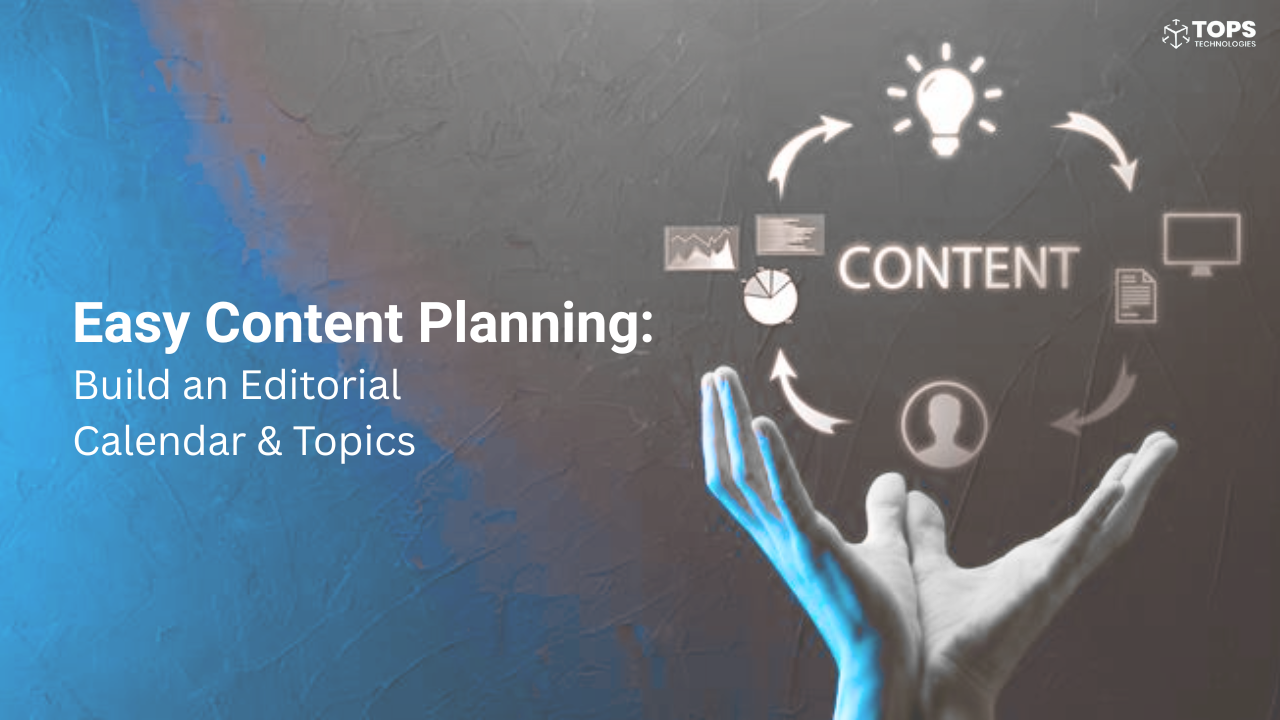
In today’s hyper-connected digital age, content is no longer just king—it’s the entire kingdom. From building a brand and nurturing a loyal audience to generating leads and driving conversions, content serves as the foundation of your digital presence. It’s the voice of your brand, the magnet for your audience, and the engine that fuels every successful online strategy.
But here’s the hard truth: Creating content without a well-defined strategy is like setting off on a road trip with no map and no destination. Sure, you might be creating and posting, but without direction, your efforts will likely go unnoticed, unfocused, and ultimately, unproductive.
That’s where strategic content planning comes into play. It’s not a luxury—it’s a necessity. A powerful content strategy ensures that every piece of content you publish is intentional, valuable, and aligned with your goals. From building an editorial calendar that keeps you consistent to selecting topics that resonate and convert, a content plan turns random efforts into measurable results.
In this practical guide, we’ll walk you through a step-by-step process to create a high-performing content strategy—one that delivers clarity, consistency, and impact. Whether you're a beginner or looking to level up your skills, these insights will transform the way you create and manage content.
And if you’re serious about taking your digital marketing skills to the next level, don’t miss your chance to enroll in the Digital Marketing Course by TOPS Technologies. This course is your gateway to mastering modern digital tools, tactics, and strategies that empower you to grow your brand, boost engagement, and drive success in the competitive online space.
Why Content Planning Matters
Before diving into the how, it's important to understand the why. A strong content plan:
- Keeps your messaging consistent.
- Ensures that you meet business goals.
- Helps you better engage your audience.
- Reduces last-minute rush and stress.
- Improves SEO performance through strategic publishing.
In short, content planning transforms random efforts into focused action.
Boost your skills with the Digital Marketing Course from TOPS Technologies and master content planning, SEO, social media, and more in just a few weeks!
Step 1: Set Clear Goals
Begin by defining what you want to achieve with your content. Some common content goals include:
- Increasing website traffic
- Boosting social media engagement
- Generating leads
- Establishing thought leadership
- Improving customer retention
Step 2: Understand Your Audience
An effective content strategy revolves around your audience's needs. Take time to research:
- Who they are (demographics)
- What challenges they face
- What type of content they prefer (blogs, videos, podcasts, etc.)
- Where they spend their time online
Use surveys, feedback forms, and analytics tools to gain deeper insights.
Step 3: Choose the Right Topics
Selecting the right topics is critical. Here’s how you can do it:
- Keyword Research: Use tools like Google Keyword Planner, SEMrush, or Ahrefs to find topics people are searching for.
- Competitor Analysis: Check what your competitors are publishing—and how you can do it better.
- Audience Questions: Look at FAQs, customer service inquiries, or platforms like Quora and Reddit for inspiration.
- Trending Topics: Stay current by tracking industry news and trends.
Aim to create a mix of evergreen (long-lasting) content and timely (trend-based) content for balance.
Step 4: Build Your Editorial Calendar
An editorial calendar is more than just a posting schedule—it's your blueprint for consistent, strategic publishing. Here's how to set one up:
- Choose a Format: Use a spreadsheet, Google Calendar, Trello board, or content management tools like Asana or CoSchedule.
- Define Your Categories: Organize your content into categories or themes.
- Set Publishing Frequency: How often will you post? (daily, weekly, bi-weekly?)
- Assign Responsibilities: If you work with a team, assign roles for writing, editing, designing, and posting.
- Plan Ahead: Ideally, plan your content 1–3 months in advance.
A good calendar offers visibility, accountability, and flexibility to adjust when needed.
Step 5: Monitor, Analyze, and Improve
Once your content is live, the job isn’t over. Track its performance using tools like:
- Google Analytics
- Facebook Insights
- SEO ranking trackers
Look at metrics like page views, bounce rates, engagement rates, and conversion rates. Use this data to understand what’s working—and what’s not—so you can refine your future content planning efforts.
Upskill Your Content Strategy with TOPS Technologies
If you want to take your digital marketing and content planning skills to the next level, consider enrolling in the Digital Marketing Course by TOPS Technologies. You'll learn not just content strategy, but also SEO, social media marketing, paid advertising, and analytics—all from industry experts.
With real-world projects and personalized guidance, you can turn your passion for content into a powerful career advantage.
Final Thoughts
Content planning doesn’t have to be complicated. With the right strategy, a little organization, and some creativity, you can build a steady stream of content that connects with your audience and drives real results. Start small, stay consistent, and don't be afraid to adapt along the way.
And remember—investing in your skills today will lead to greater success tomorrow. Get started with TOPS Technologies and transform your digital future!






